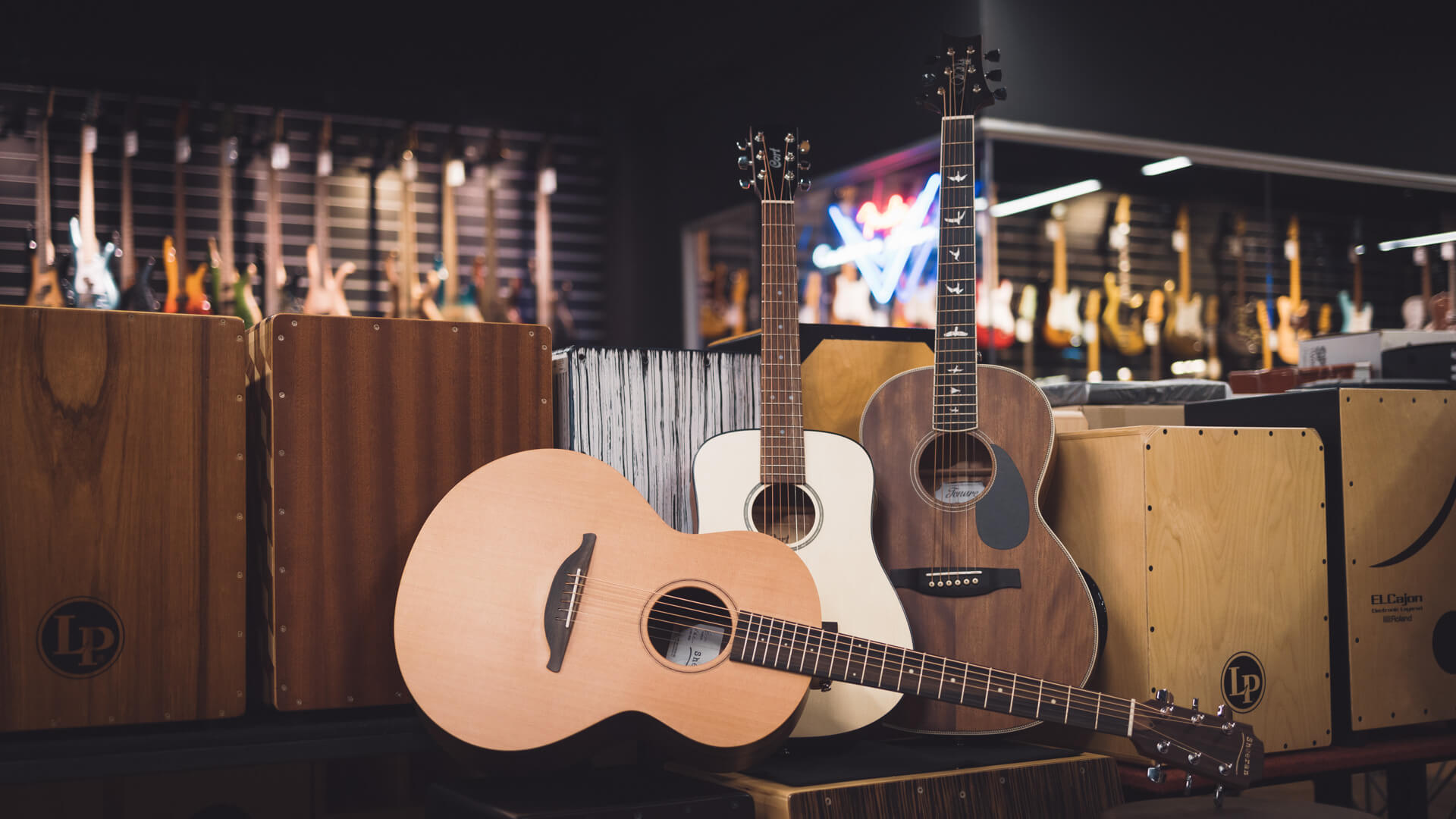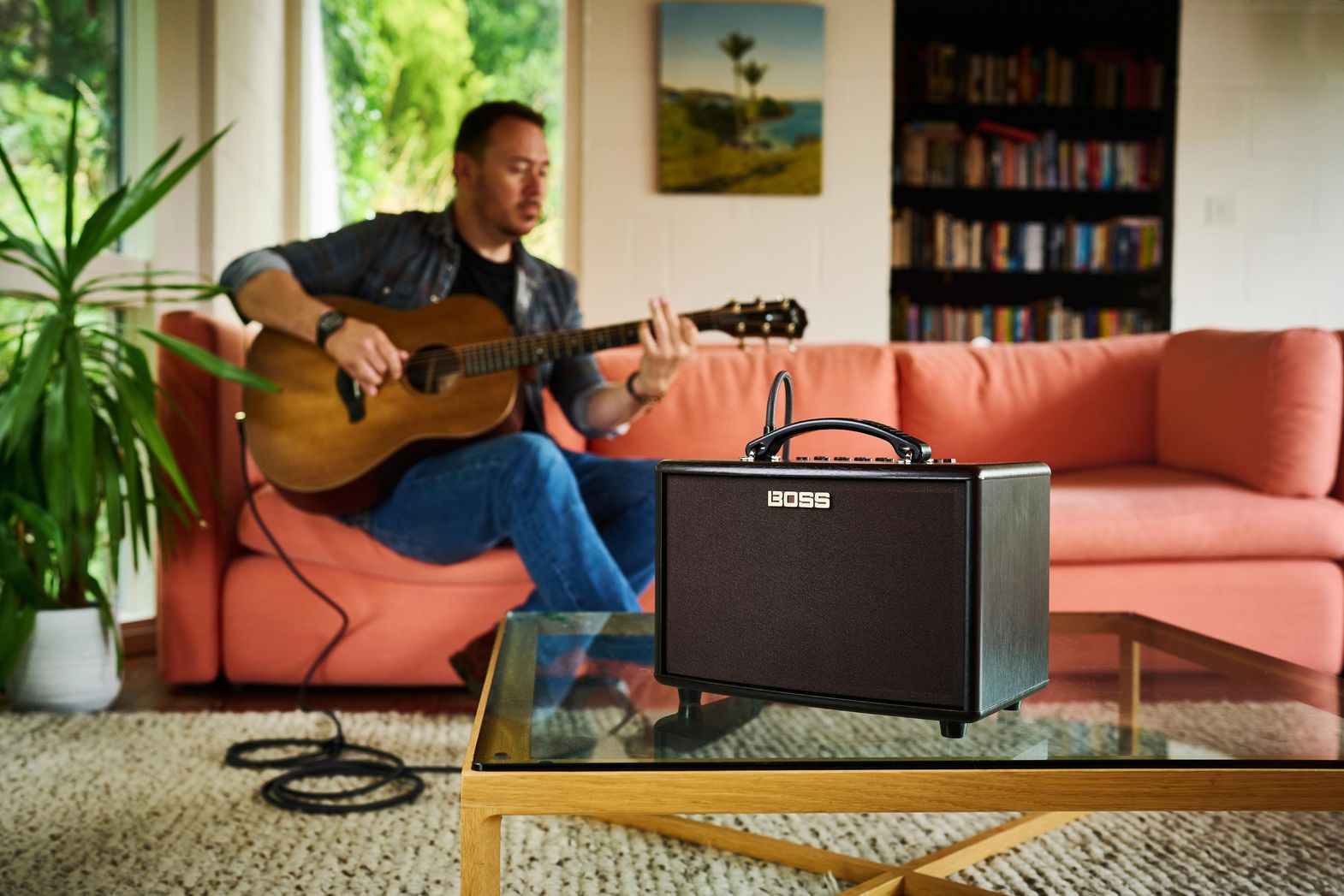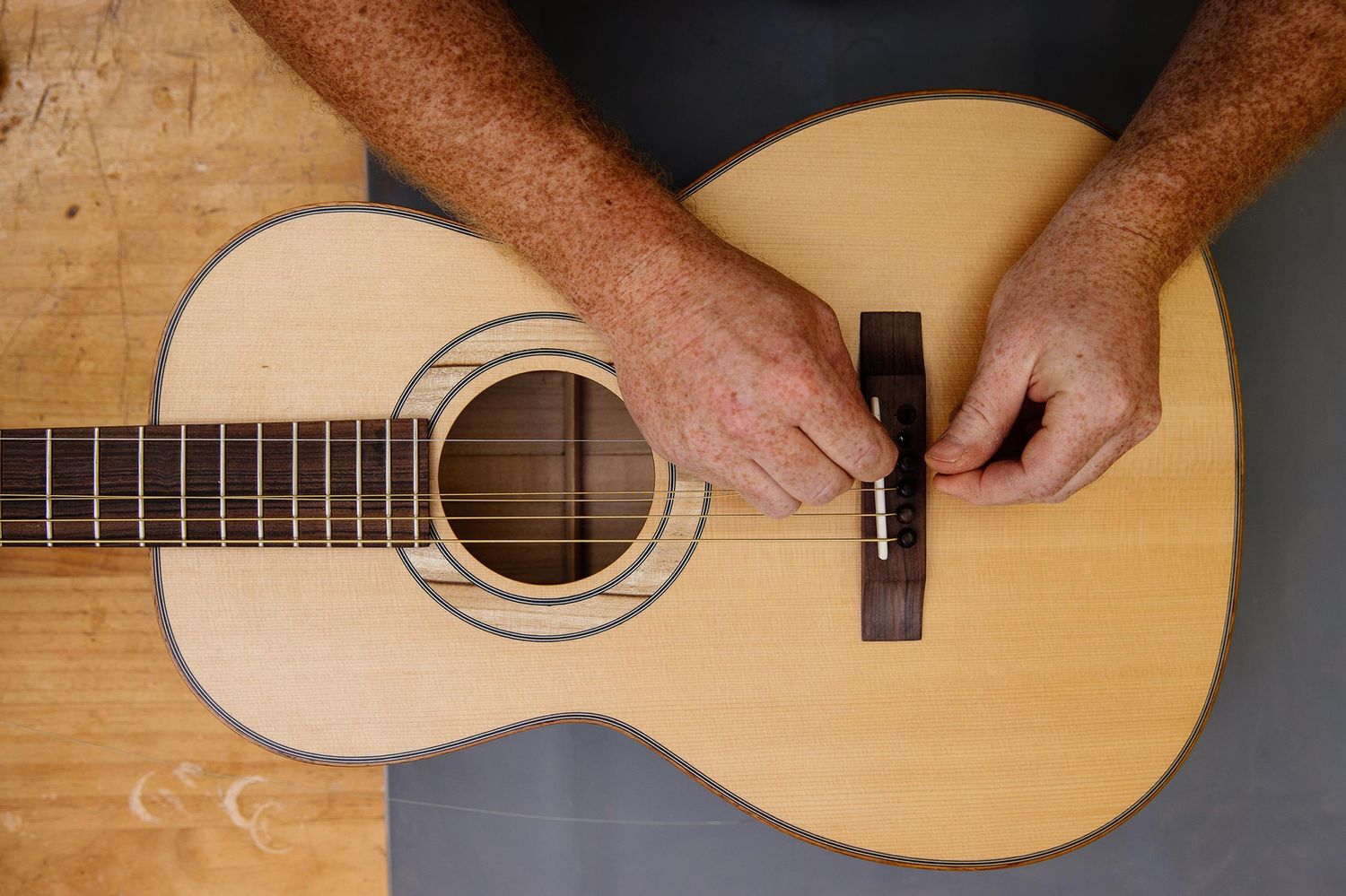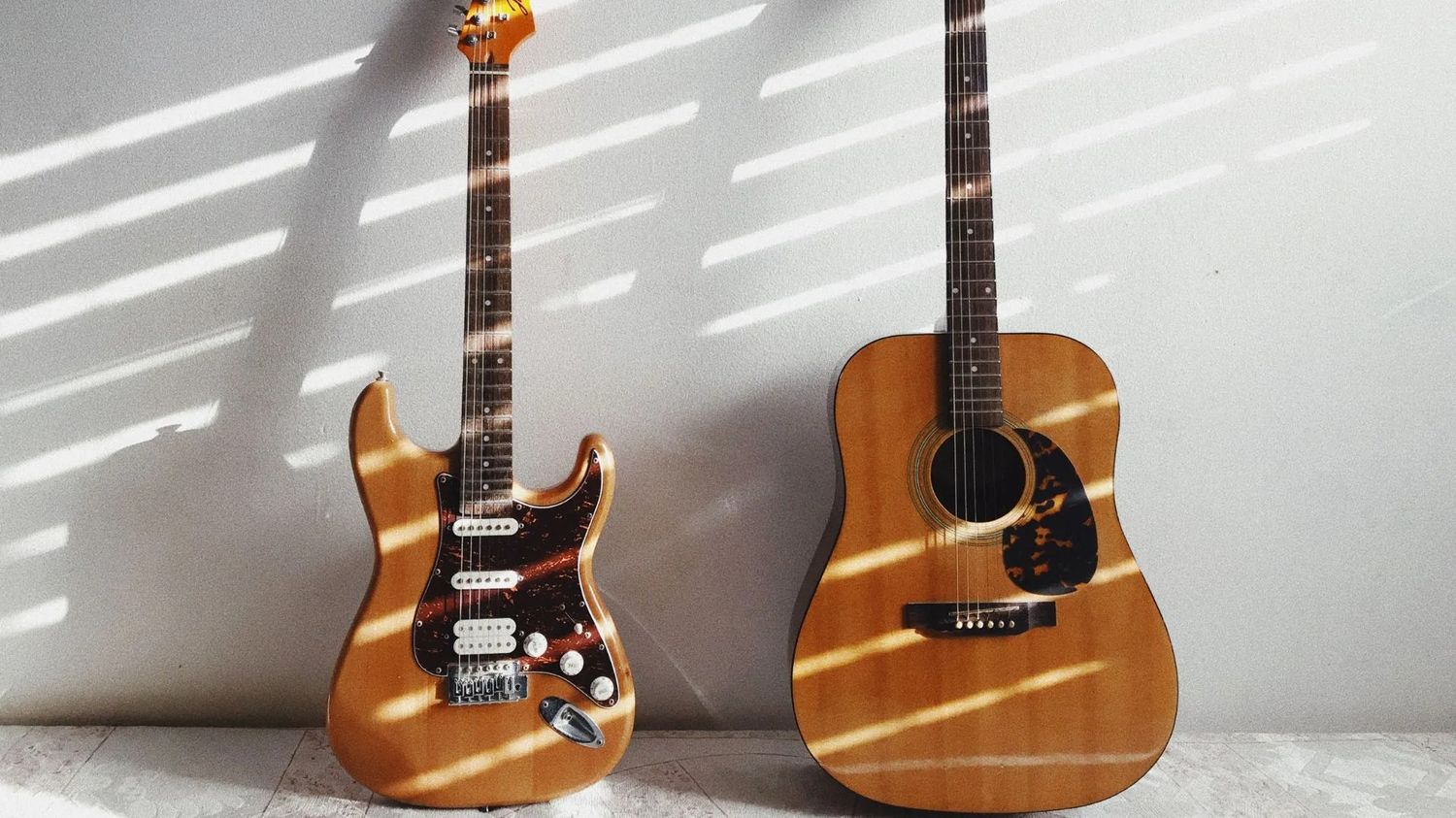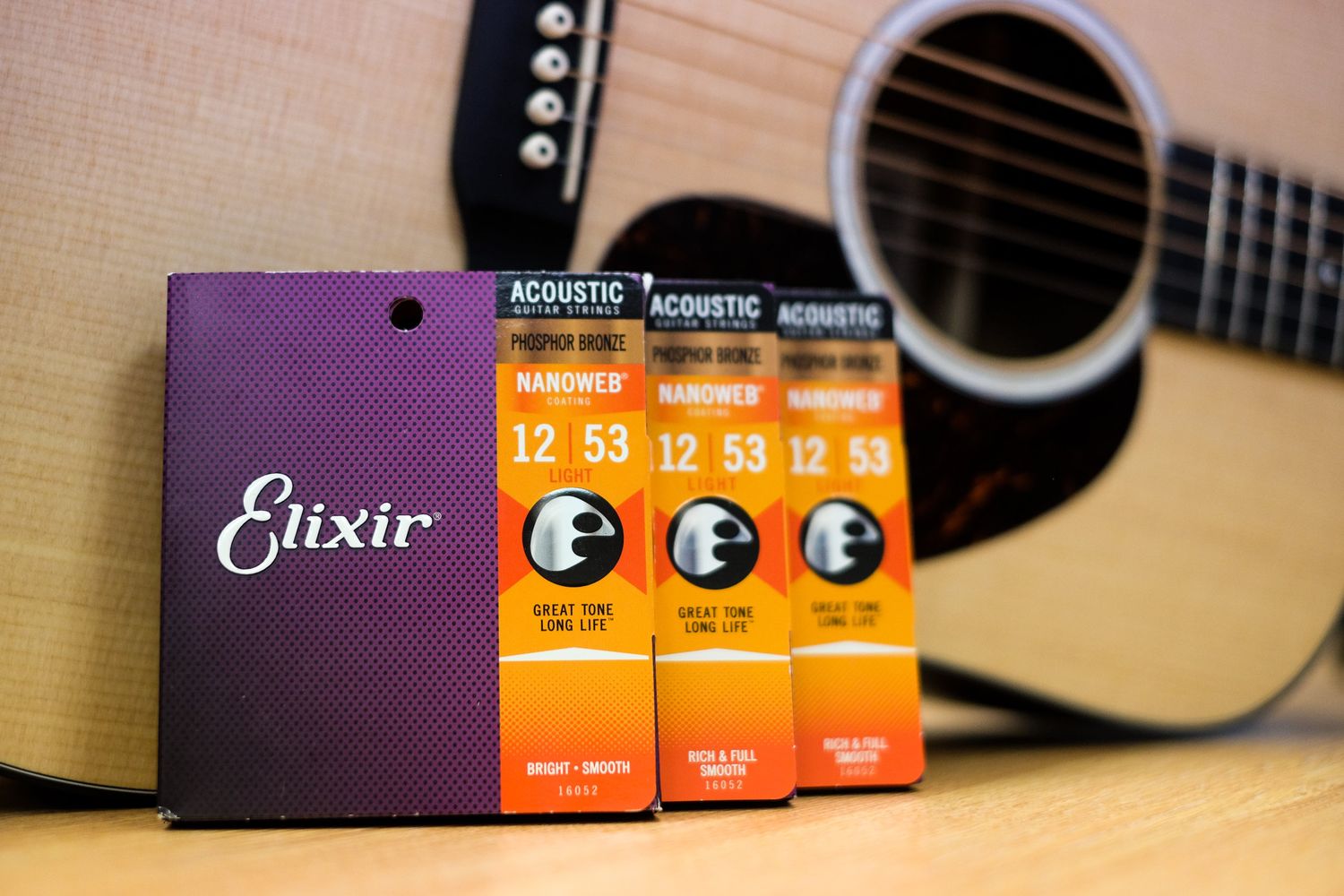Home>Instruments>Guitar>What Is A Dreadnought Acoustic Guitar
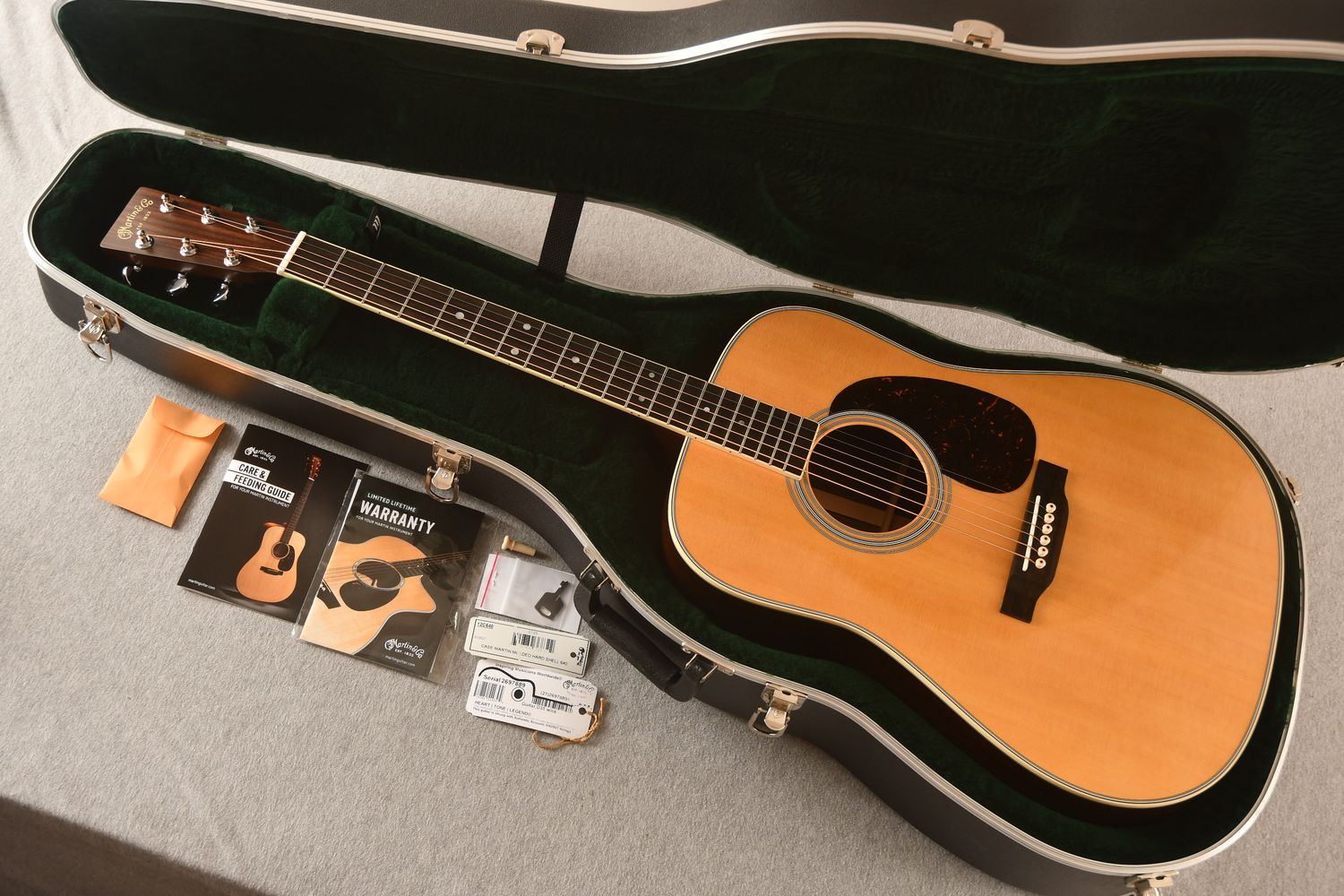

Guitar
What Is A Dreadnought Acoustic Guitar
Published: February 15, 2024
Learn about the history and features of dreadnought acoustic guitars. Find out why this iconic guitar style is a favorite among musicians. Discover the best dreadnought guitars for your playing style.
(Many of the links in this article redirect to a specific reviewed product. Your purchase of these products through affiliate links helps to generate commission for AudioLover.com, at no extra cost. Learn more)
Table of Contents
Introduction
The Dreadnought acoustic guitar is a beloved instrument with a rich history and a distinctive sound that has made it a staple in the world of music. Its name alone evokes a sense of power and grandeur, reflecting the instrument's robust and commanding presence. In this article, we will delve into the fascinating world of Dreadnought acoustic guitars, exploring their history, characteristics, popular brands and models, playing styles, and techniques.
Dreadnought guitars are renowned for their versatility, making them a popular choice for a wide range of musical genres, from folk and country to rock and bluegrass. Whether you're a seasoned musician or a budding enthusiast, understanding the allure and unique features of the Dreadnought acoustic guitar is essential for appreciating its significance in the realm of music.
Join us as we embark on a captivating journey through the evolution, craftsmanship, and enduring appeal of the Dreadnought acoustic guitar. Whether you're drawn to its powerful resonance, iconic design, or cultural impact, there's much to discover and celebrate about this iconic instrument.
History of the Dreadnought Acoustic Guitar
The history of the Dreadnought acoustic guitar is intertwined with the evolution of American music and the craftsmanship of iconic instrument makers. The term “Dreadnought” originally referred to a class of British battleships, known for their formidable size and power. In the early 20th century, the Martin Guitar Company adopted this name for a new line of guitars, reflecting the instrument’s bold and commanding presence.
In 1916, the Martin Guitar Company introduced the Dreadnought acoustic guitar, forever altering the musical landscape. This larger-bodied guitar, with its distinctive shape and booming sound, quickly gained popularity among musicians seeking enhanced volume and projection. The Dreadnought’s robust tonal characteristics made it an ideal choice for accompanying vocals and standing out in ensemble settings, solidifying its place in various musical genres.
However, it was the association with country and bluegrass music that truly propelled the Dreadnought to iconic status. In the 1930s and 1940s, influential artists such as Gene Autry and Hank Williams embraced the Dreadnought, cementing its reputation as a quintessential instrument in the realm of country music. The guitar’s resonance and ability to cut through the mix made it a natural fit for the spirited rhythms and emotive storytelling inherent in these genres.
As the decades passed, the Dreadnought’s influence extended beyond its country roots, finding favor among folk, rock, and indie musicians. Its adaptability and enduring appeal have solidified its status as a timeless classic, cherished by performers and enthusiasts alike.
Today, the legacy of the Dreadnought acoustic guitar lives on through modern iterations crafted by esteemed luthiers and revered guitar manufacturers. Its enduring popularity and continued innovation serve as a testament to the instrument’s enduring legacy and its profound impact on the world of music.
Characteristics of a Dreadnought Acoustic Guitar
The Dreadnought acoustic guitar is distinguished by several key characteristics that contribute to its iconic status and enduring popularity. Its design, tonal qualities, and playability make it a versatile and beloved instrument for musicians across genres.
Body Size and Shape: One of the defining features of a Dreadnought guitar is its large, broad-shouldered body. This design provides ample internal volume, resulting in a powerful, resonant sound with pronounced bass and clear treble frequencies. The guitar’s wide waist and lower bout contribute to its bold projection and commanding presence.
Tonal Qualities: The Dreadnought is celebrated for its rich, full-bodied sound, making it an ideal choice for both rhythmic accompaniment and melodic lead playing. Its strong bass response and clear, defined midrange allow it to shine in ensemble settings, while its balanced tonal spectrum lends itself to a wide range of playing styles and musical genres.
Playability: Despite its robust size, the Dreadnought offers comfortable playability and a versatile sonic palette. Its generous string spacing and ergonomic design make it well-suited for fingerstyle playing, flatpicking, and strumming, catering to the preferences and techniques of diverse musicians.
Iconic Design: The Dreadnought’s distinctive appearance, characterized by its broad shoulders and bold silhouette, has become synonymous with acoustic guitars. Its timeless design has inspired countless iterations and continues to captivate performers and enthusiasts with its visual allure and unmistakable presence.
Versatility: Renowned for its adaptability, the Dreadnought excels in a variety of musical contexts, from intimate solo performances to lively ensemble settings. Its ability to cut through the mix and deliver a robust, balanced sound has made it a go-to choice for artists across genres, including folk, country, rock, blues, and beyond.
These defining characteristics underscore the enduring appeal and versatility of the Dreadnought acoustic guitar, solidifying its status as a beloved instrument cherished by musicians and aficionados worldwide.
Popular Brands and Models
Several renowned guitar manufacturers have contributed to the rich tapestry of Dreadnought acoustic guitars, offering a diverse array of models that cater to the preferences and playing styles of musicians. These brands have upheld the tradition of exceptional craftsmanship while introducing innovations that resonate with performers and enthusiasts alike.
Martin: As the originator of the Dreadnought design, Martin Guitar holds a storied legacy in shaping the instrument’s evolution. The company’s lineup includes classic models such as the D-28 and the D-18, cherished for their timeless tonal characteristics and meticulous construction. Martin’s commitment to quality and innovation has solidified its position as a premier purveyor of Dreadnought guitars.
Gibson: Gibson’s contribution to the world of Dreadnought guitars is exemplified by the revered J-45 model. Known for its warm, balanced sound and distinctive appearance, the J-45 has garnered acclaim from generations of musicians. With its dedication to craftsmanship and sonic excellence, Gibson continues to captivate enthusiasts with its exceptional Dreadnought offerings.
Taylor: Taylor Guitars has made a significant impact on the Dreadnought landscape with its innovative approaches to design and construction. The company’s Grand Pacific series, including models such as the 317 and 517, showcases Taylor’s commitment to blending traditional Dreadnought elements with modern advancements, resulting in instruments that offer a compelling blend of power, clarity, and playability.
Collings: Renowned for its uncompromising standards and meticulous attention to detail, Collings Guitars has garnered acclaim for its exceptional Dreadnought models, such as the D1 and D2H. These instruments exemplify the marriage of traditional craftsmanship and contemporary precision, delivering a resonant, expressive sound that resonates with discerning musicians.
Eastman: Eastman’s dedication to crafting high-quality, accessible instruments is evident in its lineup of Dreadnought guitars. The E1D and E2D models exemplify the company’s commitment to delivering exceptional tonal richness and playability, making them compelling options for musicians seeking a blend of traditional character and modern reliability.
These brands and their respective models represent a fraction of the diverse offerings within the realm of Dreadnought guitars. Whether rooted in tradition or pushing the boundaries of innovation, these instruments continue to captivate musicians with their distinctive voices and enduring appeal.
Playing Styles and Techniques
The Dreadnought acoustic guitar’s versatile nature accommodates a wide spectrum of playing styles and techniques, making it a favored instrument for musicians across genres. From intricate fingerstyle arrangements to dynamic strumming patterns, the instrument’s robust tonal qualities and ergonomic design lend themselves to diverse musical expressions.
Strumming and Rhythm Playing: The Dreadnought’s generous body size and resonant tonal characteristics make it an ideal choice for strumming chords and driving rhythmic patterns. Its pronounced bass response and clear treble frequencies provide a solid foundation for accompanying vocals and anchoring ensemble performances. Whether delivering percussive, percussive-driven strumming or nuanced, dynamic chord progressions, the Dreadnought excels in conveying the rhythmic heartbeat of a song.
Fingerstyle Playing: Despite its larger body, the Dreadnought offers a responsive and expressive platform for fingerstyle playing. Its balanced tonal spectrum and ample string spacing enable musicians to articulate intricate melodies and harmonies with clarity and precision. Whether exploring folk, blues, or contemporary fingerstyle techniques, the instrument’s versatility and dynamic range empower players to craft nuanced, emotive performances.
Flatpicking and Lead Playing: The Dreadnought’s powerful projection and articulate response make it well-suited for flatpicking and lead playing, allowing melodies and solos to soar with clarity and definition. Its robust tonal presence ensures that lead lines cut through the mix, making it an excellent choice for musicians seeking to command attention with expressive, melodic phrasing and virtuosic displays of technique.
Hybrid Techniques: Many musicians embrace hybrid playing styles that combine elements of strumming, fingerstyle, and lead playing, leveraging the Dreadnought’s versatility to explore a diverse range of musical expressions. This approach allows for seamless transitions between rhythmic accompaniment and melodic embellishments, showcasing the instrument’s capacity for dynamic, multifaceted performances.
Whether in the hands of a seasoned virtuoso or an aspiring enthusiast, the Dreadnought acoustic guitar serves as a canvas for creative exploration, inviting musicians to unleash their artistic visions through an array of playing styles and techniques.
Conclusion
The Dreadnought acoustic guitar stands as a testament to the enduring legacy of iconic instrument design and the profound impact of craftsmanship on the world of music. From its humble origins to its widespread influence across genres, the Dreadnought has left an indelible mark on the musical landscape, captivating performers and audiences with its commanding presence and versatile sonic palette.
As we reflect on the history, characteristics, popular models, and playing styles of the Dreadnought, it becomes evident that this instrument is more than a mere tool for musical expression; it is a symbol of enduring creativity and innovation. Its resonant sound, iconic design, and adaptability have made it a cherished companion for musicians seeking to convey their stories, emotions, and aspirations through the language of music.
While the Dreadnought’s legacy is deeply rooted in tradition, its continued relevance and evolution exemplify the dynamic interplay between heritage and innovation in the realm of instrument making. As luthiers and manufacturers push the boundaries of craftsmanship and sonic exploration, the Dreadnought remains a timeless canvas for musical exploration, inviting players to push their creative boundaries and forge new paths of artistic expression.
Whether in the intimate setting of a songwriter’s circle, the exuberant energy of a live performance, or the solitude of a practice room, the Dreadnought acoustic guitar continues to inspire and empower musicians, transcending genres and generations with its enduring allure.
As we celebrate the legacy and versatility of the Dreadnought, we are reminded of the profound impact that instruments can have on the human experience, serving as conduits for emotion, connection, and creativity. The enduring resonance of the Dreadnought acoustic guitar echoes through the annals of musical history, ensuring its place as an iconic symbol of musical expression and artistic ingenuity.


